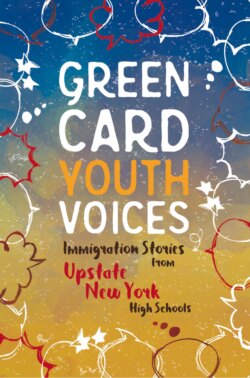Читать книгу Immigration Stories from Upstate New York High Schools - Группа авторов - Страница 12
На сайте Литреса книга снята с продажи.
Historical and Current Considerations
ОглавлениеThese times have been especially hard because our immigrant communities are already hurting due to the current political and cultural climate, dominant narratives of hate, fear, and xenophobia, which often shape the dialogue surrounding immigration in the US. Since 2013, Green Card Voices has been responding to the need for authentic, first-person narratives of America’s immigrants and refugees. Our work builds bridges among immigrants and their communities through the art of storytelling. Our organization’s programs are designed to foster empathy and promote conversations that provide a foundation for inclusive communities for all by acting as a counterweight to the negative rhetoric and stereotypes about contemporary immigration. Green Card Voices stories remind us that the American landscape and culture are rich due to the mixture of races, ethnicities, and cultures that together create a stronger and more vibrant country.
Now, during this time of fear and uncertainty, cases of xenophobia and racism targeting Asian American communities have surged. The COVID-19 pandemic has shown us that even with stay-at-home and quarantine orders, xenophobia lives on, and the need to combat and report xenophobic rhetoric and hate crimes surrounding the COVID-19 pandemic was and will continue to be vital.
We pause here to acknowledge the Native Americans, our original storytellers, whose land we now inhabit. We recognize the descendants of Africans who were forcibly brought here. We remember Frederick Douglass who lived in Rochester, New York, for twenty-five years—this city was his home longer than anywhere else in his life. In his remarkable speech Composite Nation, delivered in Boston in 1869, Douglass detailed the importance of equality for all peoples whether White, Black, female, Native American, or Chinese immigrants.2 We remember the Haudenosaunee (Iroquois), who live/d in what is known today as Central New York and Western New York when Europeans first arrived in North America.3
According to the United Nations 2019 Immigrant Population Report, 15.4% of our population or 50,661,149 individuals living in this country were not born here.4 Green Card Voices and our collaborators work every day to lift up stories of these individuals whether immigrants, refugees and, in the case of this particular book, colonial migrants in order for all to be welcomed and made to feel like they belong. We do this through our online video platform, book collections, teaching guides, traveling exhibits, podcast series and storyteller panels at schools, libraries, and conferences.
